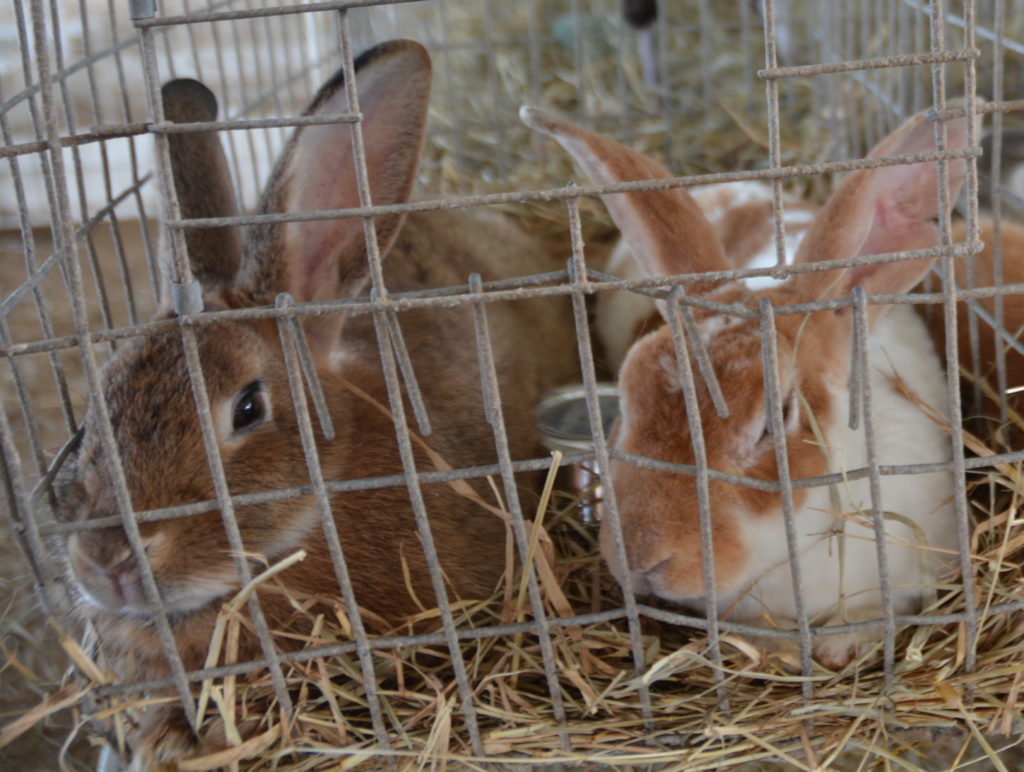4-H rabbit raisers on alert for highly contagious rabbit disease
Officials: Maintain cleanliness, isolation, monitoring
A recent Texas Animal Health Commission, TAHC, notice of confirmed cases of Rabbit Hemorrhagic Disease Virus 2, RHDV2, has 4-H project youth and leaders as well as commercial rabbit raisers across Texas on alert.

The first confirmed case of RHDV2 in Texas was found in domestic rabbits on a Hockley County premises on April 10. Since that time, the disease has been confirmed by the Texas Parks and Wildlife Department in a wild black-tailed jackrabbit in Lubbock County and a wild cottontail rabbit in Hudspeth County, TAHC officials said.
TAHC reports the RHDV2 strain is a rare disease in the U.S. and was first identified on several islands in Washington State in July 2019.
4-H rabbit owners on alert
Megan Logan, Texas A&M AgriLife Extension Service 4-H program specialist, Uvalde, said there are 1,920 4-H clubs across the state with 5,794 youth enrolled in a rabbit project. The rabbit project teaches proper methods of caring for, raising, breeding and marketing rabbits.
Youth have three project options: Market Rabbit Project, which covers breeding and raising rabbits for meat; Rabbit Breeding Project, which focuses on breeding and raising rabbits for desired or unique characteristics; and Pet Project, which is maintaining rabbits for companionship.
“We are making sure through our leadership and volunteers that every youth exhibiting a rabbit understands the seriousness of this disease and how to protect their animals, whether it has been diagnosed in their region or not,” Logan said.
Testing procedures
Terry Hensley, DVM, Texas A&M Veterinary Medical Diagnostic Laboratory, TVMDL, assistant director and extension veterinarian with AgriLife Extension, College Station, said since RHDV2 is considered a foreign animal disease, the testing is done at the U.S. Department of Agriculture Foreign Animal Disease Diagnostic Laboratory, FADDL, at Plum Island, New York.
Hensley said TVMDL performed the necropsy on the rabbit from Hockley Co. after multiple deaths of rabbits were reported on one premise.
“Our pathologist noted gross and microscopic lesions, which were suspicious for RHDV,” he said. “We submitted the liver to the Foreign Animal Disease Diagnostic Laboratory for RHDV confirmatory testing. The test came back positive for RHDV2 and was the first confirmed case in Texas.”
If RHDV is suspected on a premise, then samples are submitted directly to FADDL, usually by either a federal or state veterinarian, Hensley said.
“We may still receive a rabbit for necropsy due to other disease concerns and if we suspect RHDV, we will send samples to FADDL for confirmation,” he said. “The confirmatory PCR test is currently only available at the FADDL.”
Highly contagious rabbit disease
Susan Culp, DVM, Texas A&M AgriLife Research and AgriLife Extension veterinarian in the Institute for Infectious Animal Diseases, said RHDV2 is a highly contagious disease that can affect domestic and wild rabbits. Transmission is by direct contact between infected animals and exposure to infected carcasses, or it can be spread on contaminated food, bedding or other materials. The virus can survive for an extended period in the environment.
“People can spread it if the virus is on their clothes, hands or shoes,” she said. “It can also be mechanically transmitted by insects.”
Culp said the epidemiological link between the various outbreaks has not yet been identified. She said because it is classified as a foreign animal disease, it is dealt with differently than other common diseases in the U.S. domestic rabbit population.
Brian Pierce, Ph.D., Texas A&M Natural Resources Institute associate director, College Station, said this disease has not previously affected native rabbit species in Texas.
But it appears it is impacting native species this time, as Texas Parks and Wildlife has confirmed a jackrabbit and cottontail rabbit with the infection. New Mexico Game and Fish also has confirmed cases in wild rabbits in southern and eastern New Mexico.
“Unfortunately, we do not know the magnitude of impact on native species in New Mexico or Texas yet,” Pierce said.
Best management practices
“The Commission would like to urge all rabbit owners and breeders to protect their rabbits from diseases like RHDV2 by increasing biosecurity on their farms and in their homes,” said Andy Schwartz, state veterinarian and TAHC executive director, in a press release.
“At this time, biosecurity is the best thing you can do. We are currently researching vaccine options alongside private veterinarians, but because there is no vaccine available in Texas at this time, please work hard to practice cleanliness, isolate your rabbits and monitor your rabbits’ health closely.”
TAHC advised these procedures can reduce the chance of RHDV2 and other contagious diseases from affecting domestic rabbits.


